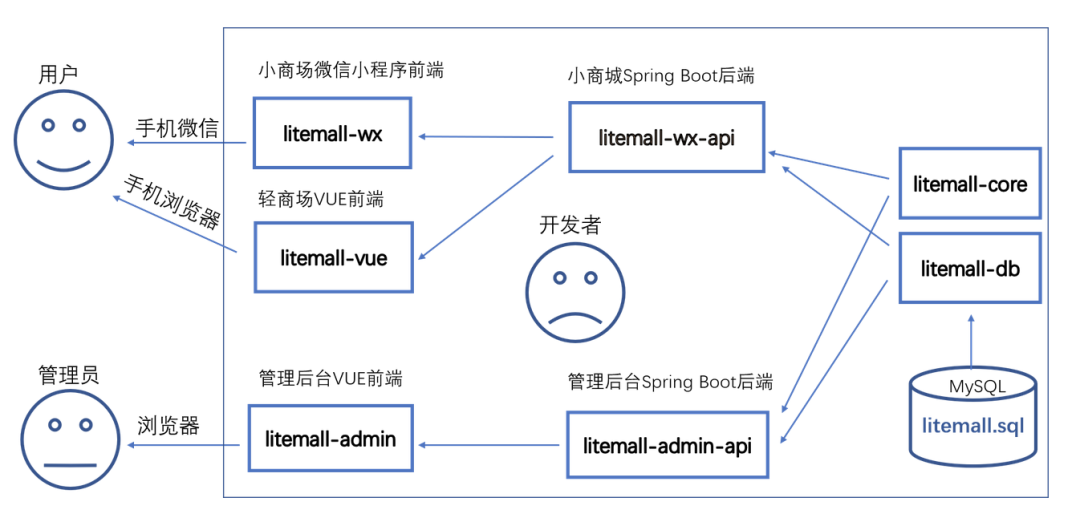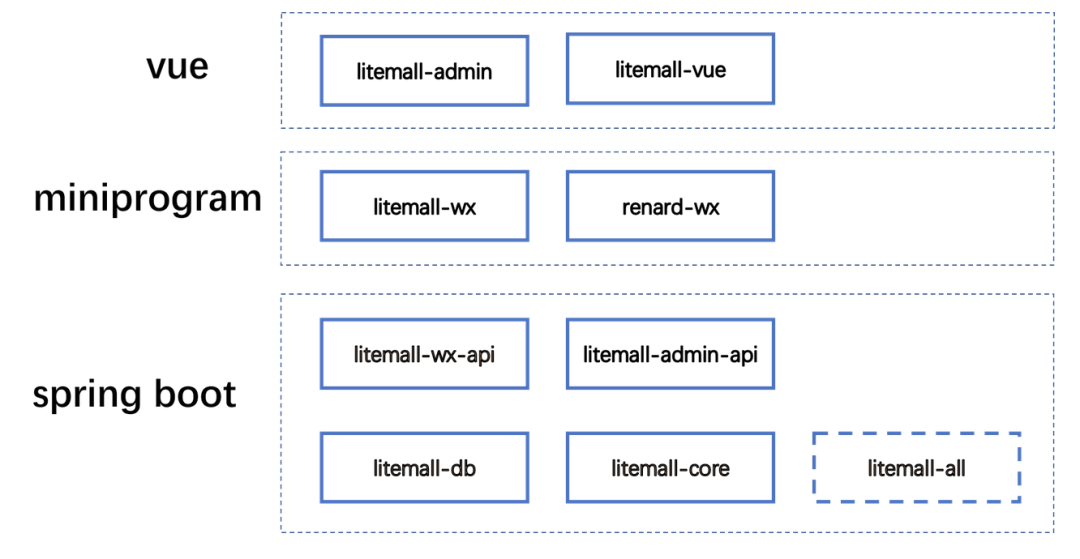阿里的程序员上厕所在干什么?原来是在看这份覆盖全网的SpringBoot实战教程
本文共 732 字,大约阅读时间需要 2 分钟。
今天给大家分享一份【Java 面试 + Java 后端技术学习指南】:一份通向理想互联网公司的面试指南,包括 Java,技术面试必备基础知识、Leetcode、计算机操作系统、计算机网络、系统设计、分布式、数据库(MySQL、Redis)、Java 项目实战等,新鲜出炉!
此手册内容专注 Java面试 ,这是本人花费了半年的时间总结的【Java 面试 + Java 后端技术学习指南】,目前本人已经拿到了腾讯等大厂offer,只要大家把这上面的知识点都搞明白,进入前 50 的互联网公司是绝对没有问题的,希望对大家的面试有一定的帮助。
主要包括以下内容。

Spring Boot后端 + Vue管理员前端 + 微信小程序用户前端 + Vue用户移动端的商城项目,项目源代码下载和Java学习资源获取见下文
又一个小商场系统。
源代码下载
转发+评论,关注我免费获取源代码地址,Java 面试 + Java 后端技术学习指南PDF
管理后台实例

- 浏览器打开,输入以下网址: http://127.0.0.1:8080/#/login
- 管理员用户名admin123,管理员密码admin123
注意:此实例只是测试管理后台,不是前两个小商城的管理后台。
项目架构

技术栈
Spring Boot
Vue
微信小程序

功能
小商城功能
- 首页
- 专题列表、专题详情
- 分类列表、分类详情
- 品牌列表、品牌详情
- 新品首发、人气推荐
- 优惠券列表、优惠券选择
- 团购
- 搜索
- 商品详情、商品评价、商品分享
- 购物车
- 下单
- 订单列表、订单详情、订单售后
- 地址、收藏、足迹、意见反馈
- 客服
源代码下载
转发+评论,关注我免费获取源代码地址,Java 面试 + Java 后端技术学习指南PDF
转载地址:http://xmkc.baihongyu.com/
你可能感兴趣的文章
Mysql 数据库重置ID排序
查看>>
Mysql 数据类型一日期
查看>>
MySQL 数据类型和属性
查看>>
mysql 敲错命令 想取消怎么办?
查看>>
Mysql 整形列的字节与存储范围
查看>>
mysql 断电数据损坏,无法启动
查看>>
MySQL 日期时间类型的选择
查看>>
Mysql 时间操作(当天,昨天,7天,30天,半年,全年,季度)
查看>>
MySQL 是如何加锁的?
查看>>
MySQL 是怎样运行的 - InnoDB数据页结构
查看>>
mysql 更新子表_mysql 在update中实现子查询的方式
查看>>
MySQL 有什么优点?
查看>>
mysql 权限整理记录
查看>>
mysql 权限登录问题:ERROR 1045 (28000): Access denied for user ‘root‘@‘localhost‘ (using password: YES)
查看>>
MYSQL 查看最大连接数和修改最大连接数
查看>>
MySQL 查看有哪些表
查看>>
mysql 查看锁_阿里/美团/字节面试官必问的Mysql锁机制,你真的明白吗
查看>>
MySql 查询以逗号分隔的字符串的方法(正则)
查看>>
MySQL 查询优化:提速查询效率的13大秘籍(避免使用SELECT 、分页查询的优化、合理使用连接、子查询的优化)(上)
查看>>
mysql 查询数据库所有表的字段信息
查看>>

